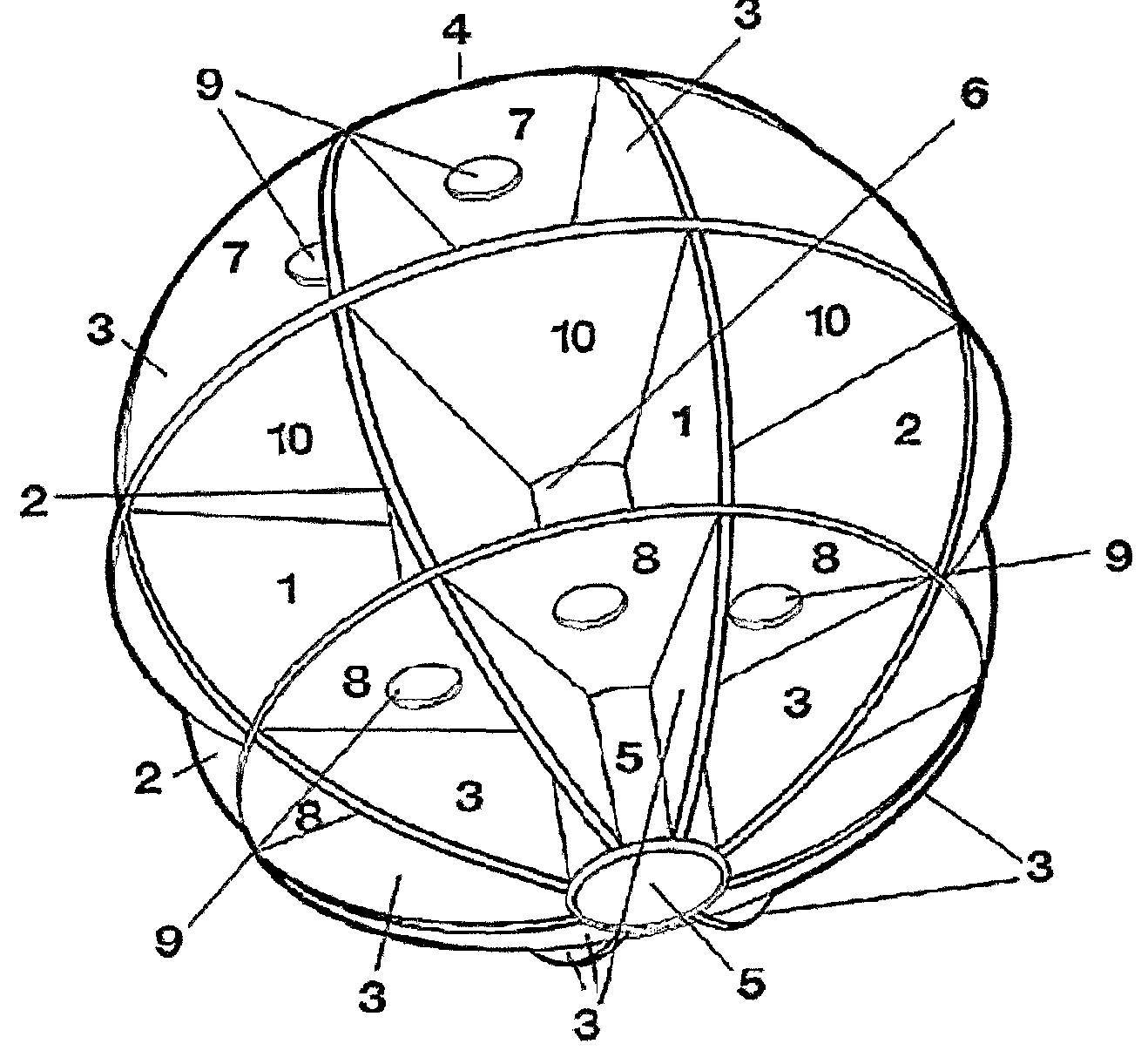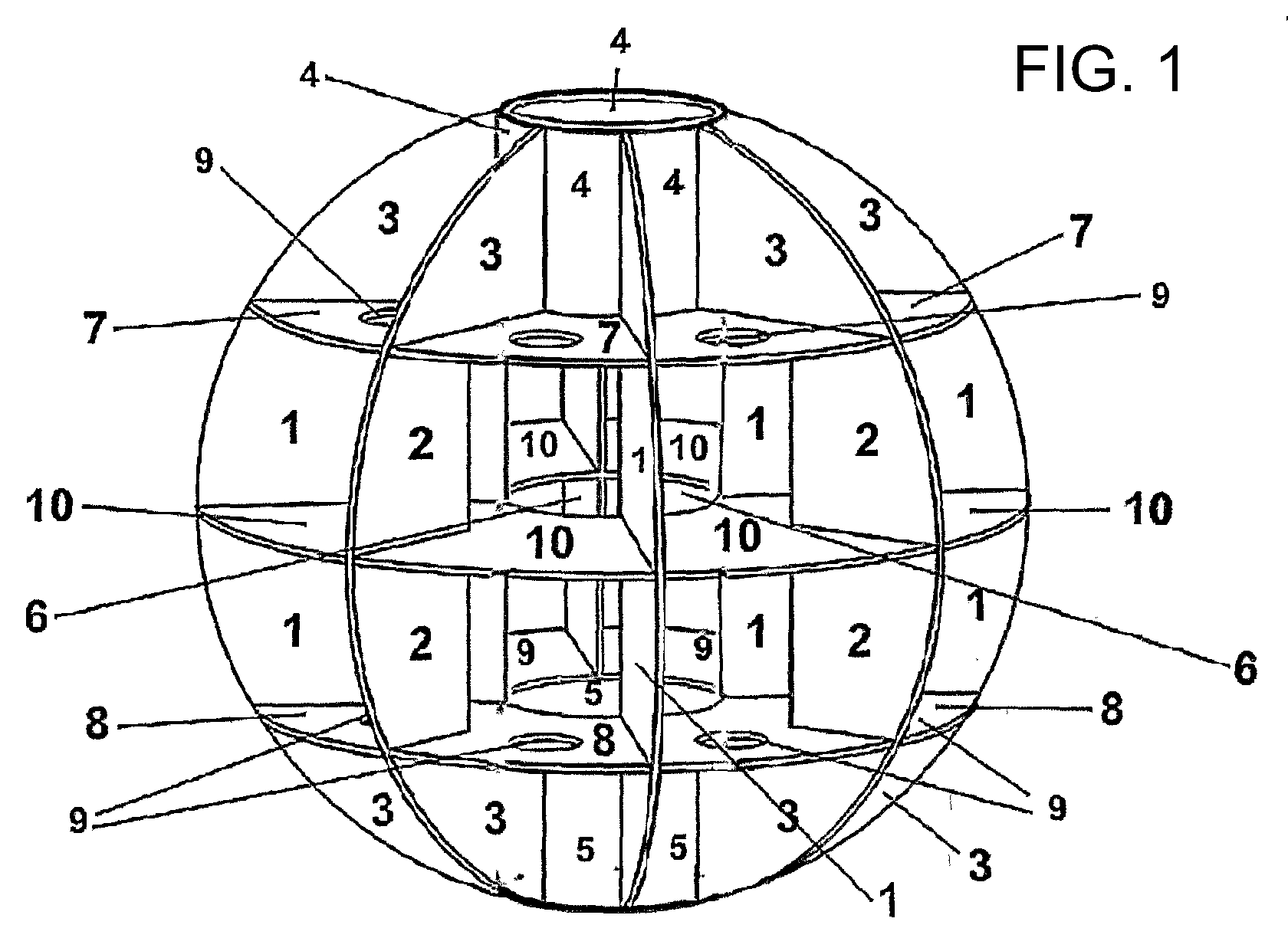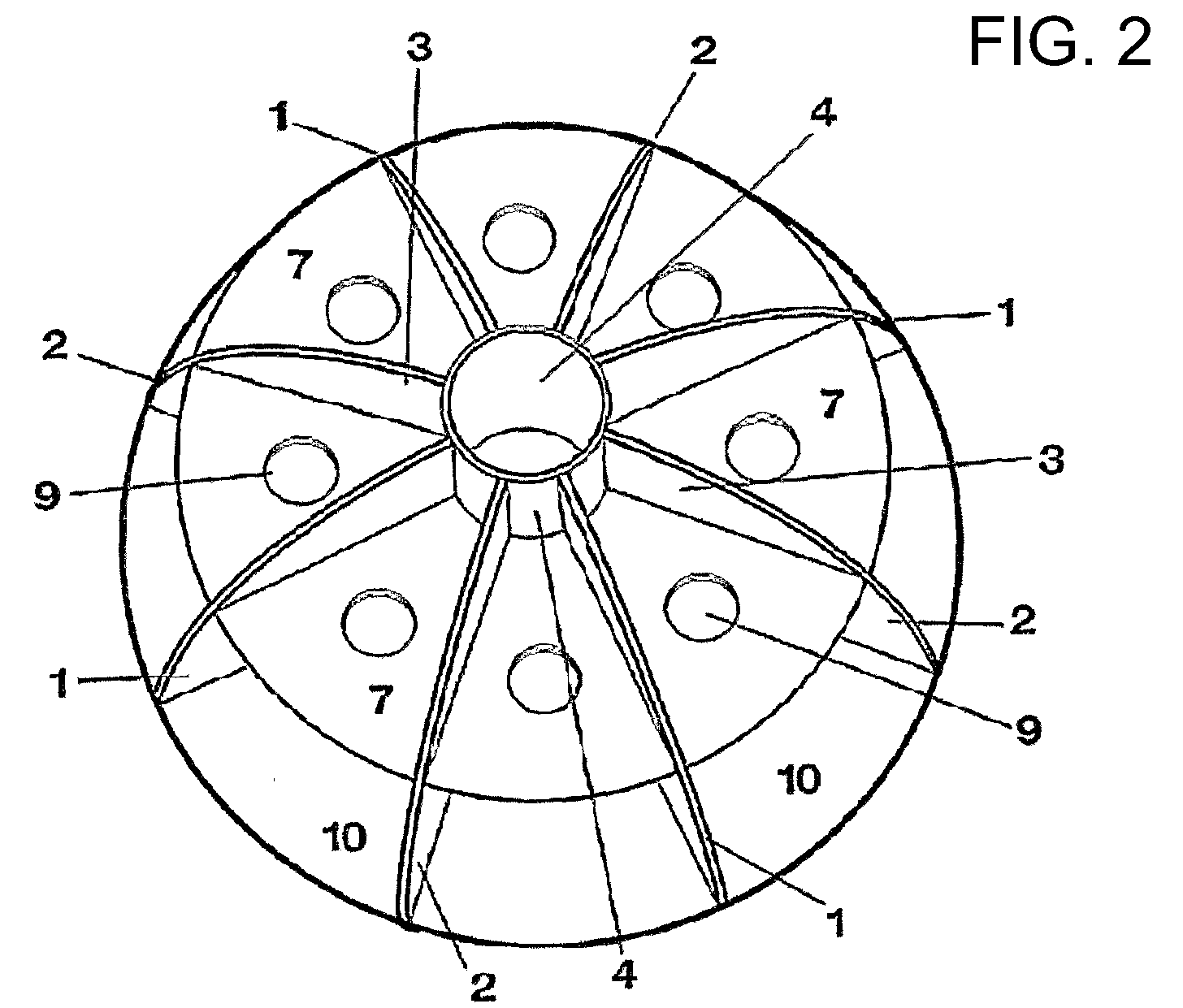Spherical Filling Body
- Summary
- Abstract
- Description
- Claims
- Application Information
AI Technical Summary
Problems solved by technology
Method used
Image
Examples
Embodiment Construction
[0011]The object is achieved by the filling body set forth in the claims. An advantage of the filling body described is that it has the spherical shape with an absolutely smooth surface which is ideal for the methods defined in the claims, and the filling bodies described roll on each other perfectly and fill a container completely with the most possible reliability. There will definitely not be any bridge formation by jamming of the filling bodies described. The production methods described in the claims allow for the properties of the described filling body to be precisely adapted to the respective purpose of use, and for identity of all filling bodies. A further advantage of the described filling body is that is has as low a volume displacement and weight as possible. Although the containers must be completely filled with the inventive filling bodies, the described filling bodies must have such a high portion of cavities that the capacity for the liquid contents of the container ...
PUM
| Property | Measurement | Unit |
|---|---|---|
| Temperature | aaaaa | aaaaa |
| Length | aaaaa | aaaaa |
| Pressure | aaaaa | aaaaa |
Abstract
Description
Claims
Application Information
 Login to view more
Login to view more - R&D Engineer
- R&D Manager
- IP Professional
- Industry Leading Data Capabilities
- Powerful AI technology
- Patent DNA Extraction
Browse by: Latest US Patents, China's latest patents, Technical Efficacy Thesaurus, Application Domain, Technology Topic.
© 2024 PatSnap. All rights reserved.Legal|Privacy policy|Modern Slavery Act Transparency Statement|Sitemap



